What Are Seasonal Allergies?
If you suffer from seasonal allergies, you’re far from alone. Also called hay fever, it strikes almost 20 million U.S. adults; more than 7 million children have respiratory allergies.1
Many people experience allergies in the spring while others may be afflicted in the summer, fall or even winter depending on their triggers. Some individuals can suffer throughout most of the year if they are allergic to multiple types of pollen. People with indoor allergies, including to pets and dust mites, can experience symptoms all year long. In addition, mold spores can cause issues either seasonally or year-round.2
Spring Allergy Season
Many people may wonder, “when do spring allergies start?”or “when do spring allergies end?” For a lot of areas across the country, spring allergies typically begin in February and last until early summer.3
There can, however, be some minor variation in the timeline depending on a location’s climate. For example, in areas with mild weather, some pollens may last for a greater amount of time, with a longer grass season on the West Coast compared to the Midwest. Meanwhile, wetter places with late-winter snowmelt and cool rain in the spring often tout lower pollen counts.4 Look at a month-by-month pollen chart for insight into allergen levels, types of pollen, and what to expect in different locations.
March
Tree pollen dominates. Weed and grass pollen can ramp up if spring comes early.
Tree Pollen | Grass Pollen |
|---|---|
Moderate | Low |
April
Tree pollen peaks.
Tree Pollen | Grass Pollen |
|---|---|
High | Moderate |
May
Tree and grass pollen counts are high across the U.S.
Tree Pollen | Grass Pollen |
|---|---|
Moderate | Moderate |
June
Grass pollen peaks.
Tree Pollen | Grass Pollen |
|---|---|
Low | High |
This timeline can vary based on a location’s climate.

In areas with mild weather, some pollens may last for a greater amount of time, with a longer grass season on the West Coast compared to the Midwest, for instance

Wetter places with late winter snowmelt and cool rain in the spring often have lower pollen counts.
Common Sources of Tree and Grass Pollen

Mulberry
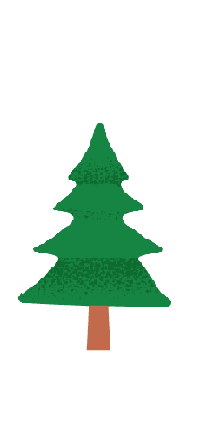
Pine
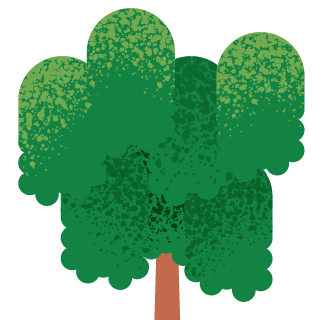
Willow

Bermuda
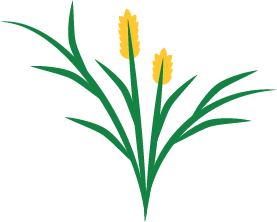
Rye
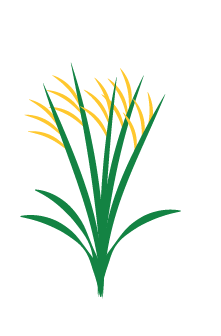
Oat
What Causes Spring Allergies?
Allergies occur when a person’s immune system deems certain proteins, called allergens, as germs or foreign bodies. Developing an allergy and then experiencing an allergy attack is a two-part process. The initial step occurs when the body encounters the allergen for the first time and creates antibodies which attach to specific types of cells. This process, called sensitization, primes the body for an allergy attack the next time it experiences the allergen. When this happens, the cells release histamines — chemical substances that cause unpleasant symptoms such as sneezing, coughing, and rashes on the skin.5
Different allergens cause problems for different people. The most common causes of spring allergies include tree and grass pollen, mold spores, and insects.
Tree and Grass Pollen
Many types of vegetation use pollen for fertilization. The larger, waxy type of pollen found on colorful flowers and disseminated by bees doesn’t typically cause a lot of symptoms for people with allergies. The smaller, powdery pollen grains on many trees, grasses, and weeds, however, tends to be light and easily blown by the wind from one plant to another (and to allergy sufferers).6,7
Tree pollen is one of the first major allergy triggers to appear during the United States’ spring allergy season. Cedar trees can release pollen as early as December or January in the South, while most other regions don’t experience an increase in this allergen until February with the onset of alder and maple tree pollen. Pollen from trees serves as one of the most common allergy triggers starting in March, and reaches its peak in April when pine, mulberry, and willow trees release their pollen.
While trees are usually the main source of spring allergies, they are not the only one. In certain locations, weeds and grasses can trigger allergy symptoms as early as March if spring comes early. By May, the pollen count of grasses such as rye and Bermuda typically begins to increase, but it’s not until June that grass pollen will typically reach its peak.
Mold
While perhaps not as obvious a trigger for seasonal allergies, mold can also cause symptoms in the spring. Mold and mildew release seeds, known as spores, in order to reproduce. These spores can move through the air, often when the weather is windy and dry. Other times they spread with dew or fog when there is high humidity.
Outside, mold can be found on rotting logs and fallen leaves, on grasses and grains, in compost piles, and other damp places. During the spring months, decomposing plants that have not survived the cold of winter can turn into vehicles for mold growth. Mold can also thrive indoors, especially in damp places such as kitchens, bathrooms, and basements.8 Learn how to reduce mold indoors here.
Insect Bites and Stings
Unlike typical seasonal allergy symptoms such as sneezing and congestion, insect bites and stings usually cause pain, itching, redness, and/or minor swelling around the affected area. Bites and stings can also lead to a serious or life-threatening allergic reaction known as anaphylaxis. Anyone who has hives; swelling of the lips, tongue, or throat; trouble breathing; or other significant symptoms following a bite or sting should seek immediate medical care.9
When people think of biting insects during the spring season, mosquitos often top the list, perhaps because they prefer temperatures similar to body temperatures.10 While bed bugs can cause problems indoors year-round, they also prefer higher temperatures so they may be more active as spring and summer commence.11
Among stinging insects, bees are one type that increase in activity in spring as they work to make their populations greater for the coming months.12
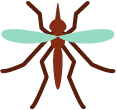
Mosquitos
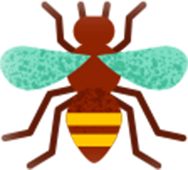
Bees
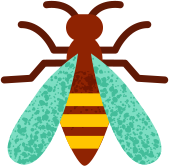
Wasps
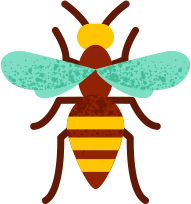
Hornets
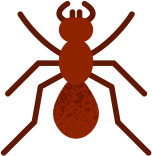
Fire ants

Fleas
Spring Allergy Symptoms
As anyone with spring pollen allergies knows, the symptoms can be difficult. Spring allergens, like tree and grass pollens, can trigger allergy symptoms such as sneezing, runny or stuffy nose, swollen mucous membranes, coughing, and itchy, watery eyes. Just as the amount of pollen can be affected by your location, so can the type of symptoms and severity.13
Exposure to mold can also cause allergy symptoms for people with spring allergies. When they breathe in mold spores through the nose, they can experience symptoms similar to pollen allergies including runny nose, sneezing, congestion, and itching.14
Finally, while perhaps not as top-of-mind as sneezing and sniffling, spring allergies can also result in skin rashes. Insect bites and stings may cause skin irritation, as can exposure to certain plants such as poison oak, poison ivy, and sumac. Even some grasses and other plants can lead to rashes.15
Check Your Allergy Forecast
Certain weather conditions can contribute to the severity of allergies. For example, dry, windy days cause an increase in pollen in the air, while rain helps reduce the amount. It can also be helpful to check the pollen count via local weather reports or with the Zyrtec® ALLERGYCAST® app. 17 18
Avoid Coming in Contact with Outdoor Allergens
Specific actions can make a difference in your exposure to pollen. Keep windows and doors closed at night, and avoid outside activities in the early morning when pollen counts reach their highest. Wear protective clothes — or better yet recruit someone else — for lawn mowing and other gardening tasks. After spending time outdoors, take a shower to remove pollen from your hair and skin and wash your clothes.
Keep Your Air Clean
While it’s impossible to keep all pollen out of the house, you can reduce the amount. There are a handful of home improvements you can make that can help reduce outdoor allergens from coming in, including using air conditioning units, installing high-efficiency particulate (HEPA) air filters in your home heating or cooling systems, using portable HEPA air purifiers, and being sure to vacuum frequently. Learn more about maintaining good indoor air quality here. 19
Relieve Your Allergy Symptoms
It is impossible to avoid pollen altogether. Some people may find over-the-counter medications improve symptoms and quality of life. Oral antihistamines can help relieve the misery of sneezing, runny nose, and itchy, watery eyes. Decongestants can also be used to reduce congestion but should only be taken for a few days at a time. If allergy symptoms are significantly impacting your daily life, talk to a doctor or allergist for additional help.
Conclusion
By understanding the causes and recognizing the signs of spring allergies — plus arming yourself with helpful tools to manage your symptoms — you can look forward to indoor and outdoor spring activities.

Kristen Stewart is a freelance writer specializing in health and lifestyle topics. She lives in New Jersey with her husband, three kids and two very needy cats.
References
https://community.aafa.org/blog/how-does-rain-affect-pollen-levels
https://www.aaaai.org/conditions-and-treatments/conditions-dictionary/po...,
https://www.aaaai.org/conditions-and-treatments/library/allergy-library/outdoor-allergens,
https://www.mayoclinic.org/diseases-conditions/mold-allergy/symptoms-causes/syc-20351519
https://www.mayoclinic.org/diseases-conditions/hay-fever/in-depth/seasonal-allergies/art-20048343
Links to other parties’ articles and websites are provided for convenience only. Kenvue is not responsible for their content.

